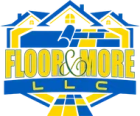Resilient flooring includes materials like vinyl and linoleum that handle daily wear remarkably well. These floors resist scratches, stains, and moisture damage better than many alternatives. Custom flooring installation of resilient materials works well in busy areas like kitchens and commercial spaces. You’ll find countless styles, colors, and patterns to match your space. The combination of easy installation and simple upkeep makes this a smart choice for many homeowners.
Benefits of Resilient Flooring
Resilient flooring delivers real advantages through its toughness and minimal upkeep needs. These floors hold up against scratches, stains, and moisture in busy residential and commercial areas. The engineered construction handles heavy furniture and foot traffic without denting or showing indentations over time. You can choose from many styles, colors, and patterns to match your design vision. The straightforward installation and cleaning routines save both time and money.
Types of Resilient Flooring
Resilient flooring includes several distinct types, each suited to different needs:
- Vinyl flooring – Known for water resistance and easy care, perfect for busy households
- Linoleum – Made from natural materials like linseed oil and cork, offering eco-friendly options in many colors
- Rubber flooring – Provides excellent shock absorption for gyms, playrooms, and other comfort-focused spaces
- Luxury vinyl tile (LVT) – Looks like real wood or stone but offers better durability and simpler installation
- Cork flooring – Delivers natural warmth, sound insulation, and sustainable qualities for environmentally conscious buyers
Durability and Versatility
These floors stand out for their toughness and adaptability compared to other flooring types. Materials like LVT and linoleum handle high-traffic zones without visible wear. They resist scratches, stains, and water damage, which makes them practical for kitchens, bathrooms, and business settings. The design options span a wide spectrum of patterns and colors to fit any interior style. The multi-layer construction includes a protective wear layer that guards against damage and keeps your floors looking good for years with minimal effort.
Installation and Maintenance Tips
Proper installation sets the foundation for long-lasting performance. Start with a clean, dry, and level subfloor before laying any material. Use the adhesive and method the manufacturer recommends for your specific product. Let the flooring adjust to room temperature before installation to prevent buckling or gaps later. Apply steady pressure during installation to secure everything properly.
If you’re planning a luxury vinyl plank flooring installation, hiring professionals can ensure precise alignment and seamless finishes that last for years. They can also advise on underlayment options for better comfort and noise reduction. For maintenance, sweep or vacuum regularly to clear away dirt and debris. Clean spills right away using cleaners the manufacturer approves. Skip harsh chemicals or rough scrubbing tools that can harm the surface.
Environmental Considerations
The environmental footprint of your flooring choice matters for sustainable building practices. When selecting resilient flooring, consider these factors:
- Material Composition – Check if the product uses recycled content or can be recycled after use
- Indoor Air Quality – Select products with low VOC emissions for healthier indoor air
- Manufacturing Processes – Research whether production methods follow eco-friendly standards
- Longevity and Durability – Pick floors built to last, reducing replacement frequency and waste
For a complete home upgrade that enhances both energy efficiency and style, you can also explore blind installation in Centennial CO services, which complement resilient flooring by improving light control and insulation.
Resilient Flooring Vs Other Options
Comparing resilient flooring to alternatives helps you make the right choice for your project. Unlike carpeting, resilient floors need less frequent deep cleaning and resist stains better. For homeowners who prefer the warmth of carpet, working with a carpet installer ensures a smooth, professional finish and correct padding for maximum comfort. Hardwood creates a premium look but scratches more easily and suffers from water damage that resilient options avoid. Compared to ceramic tile, resilient flooring feels more comfortable underfoot and stays warmer in cold weather. Vinyl plank flooring delivers the wood appearance people love with better moisture resistance and durability, making it popular for high-traffic spaces in homes and businesses.
Related Topics:
